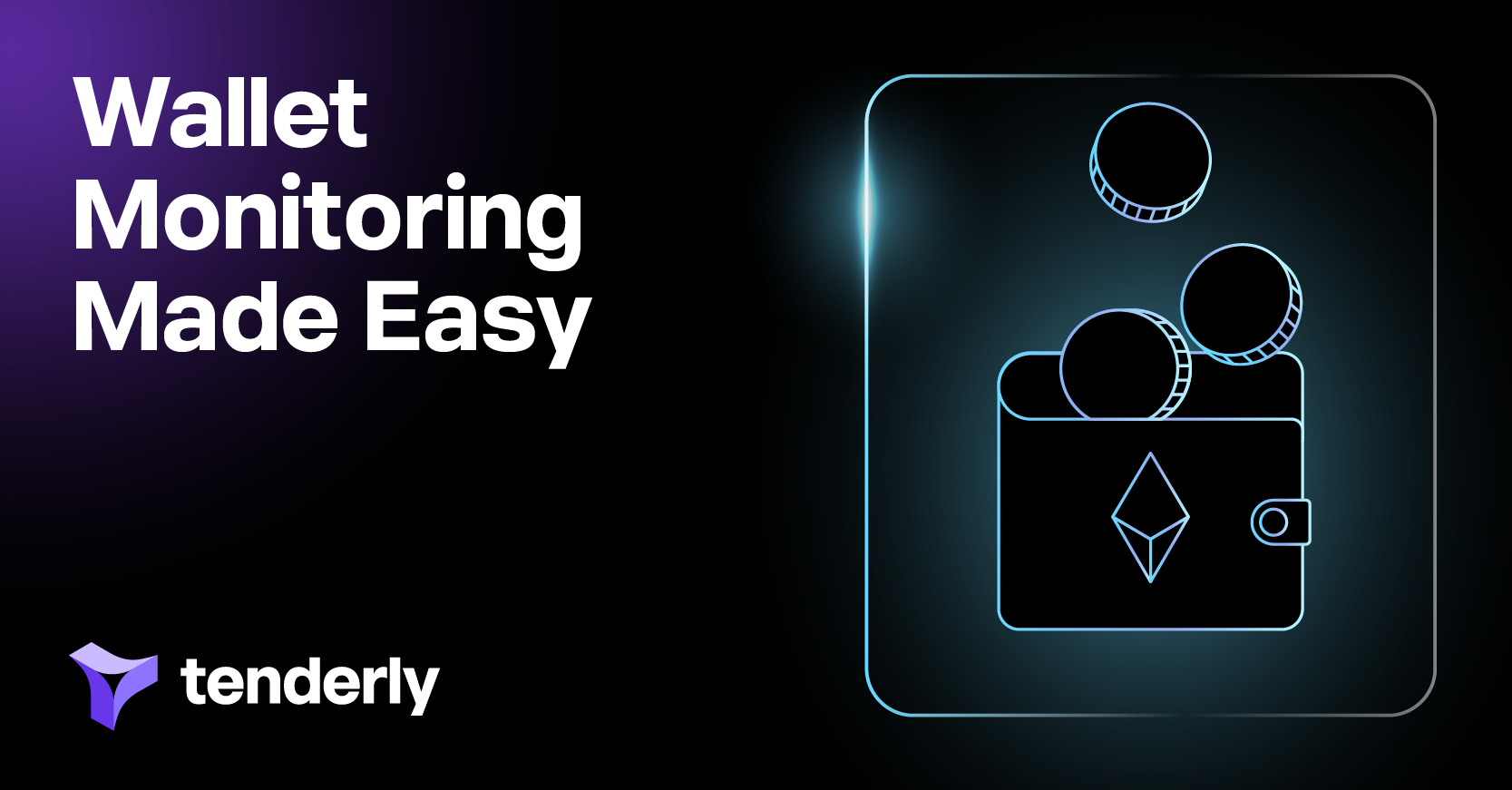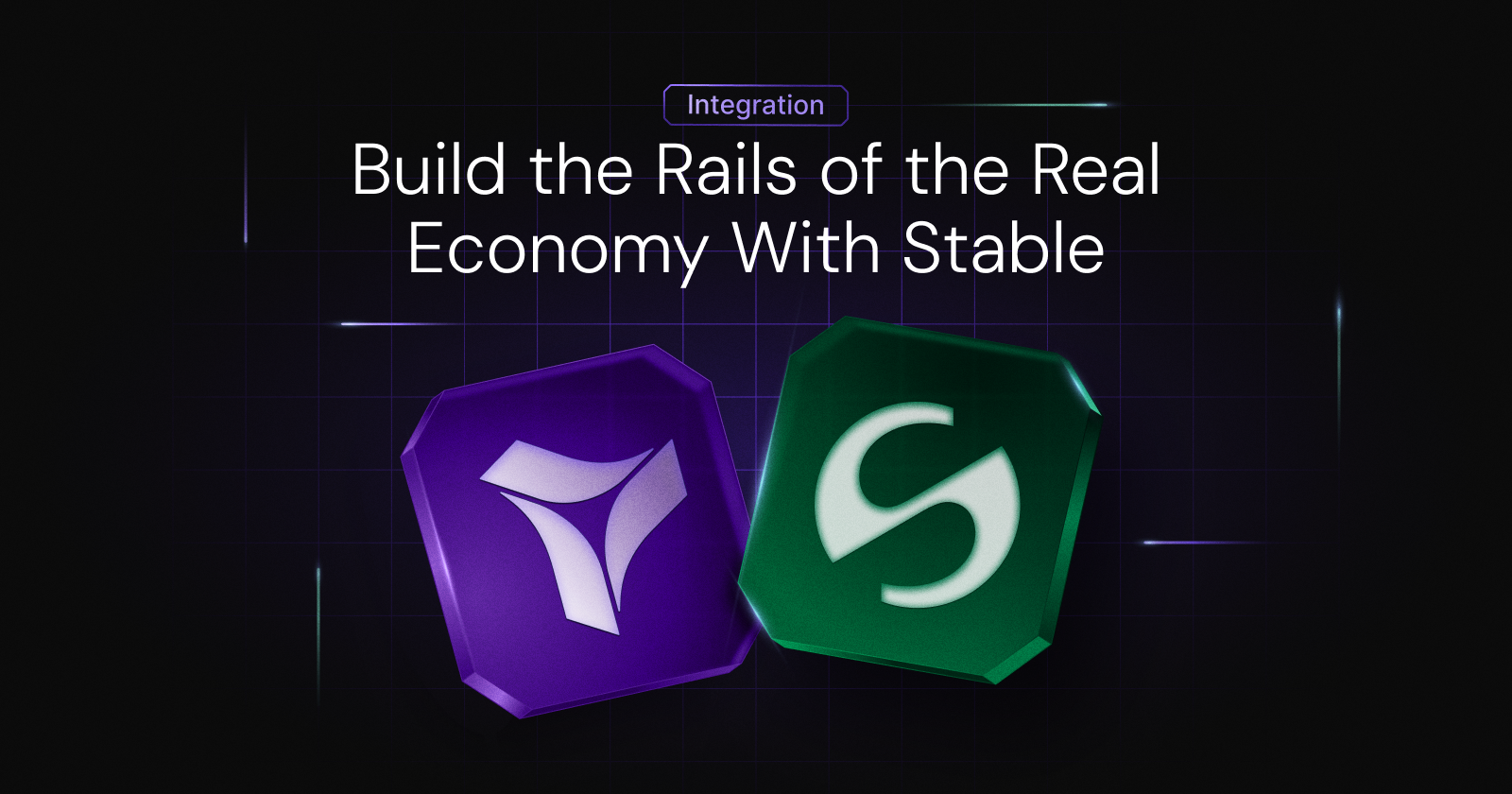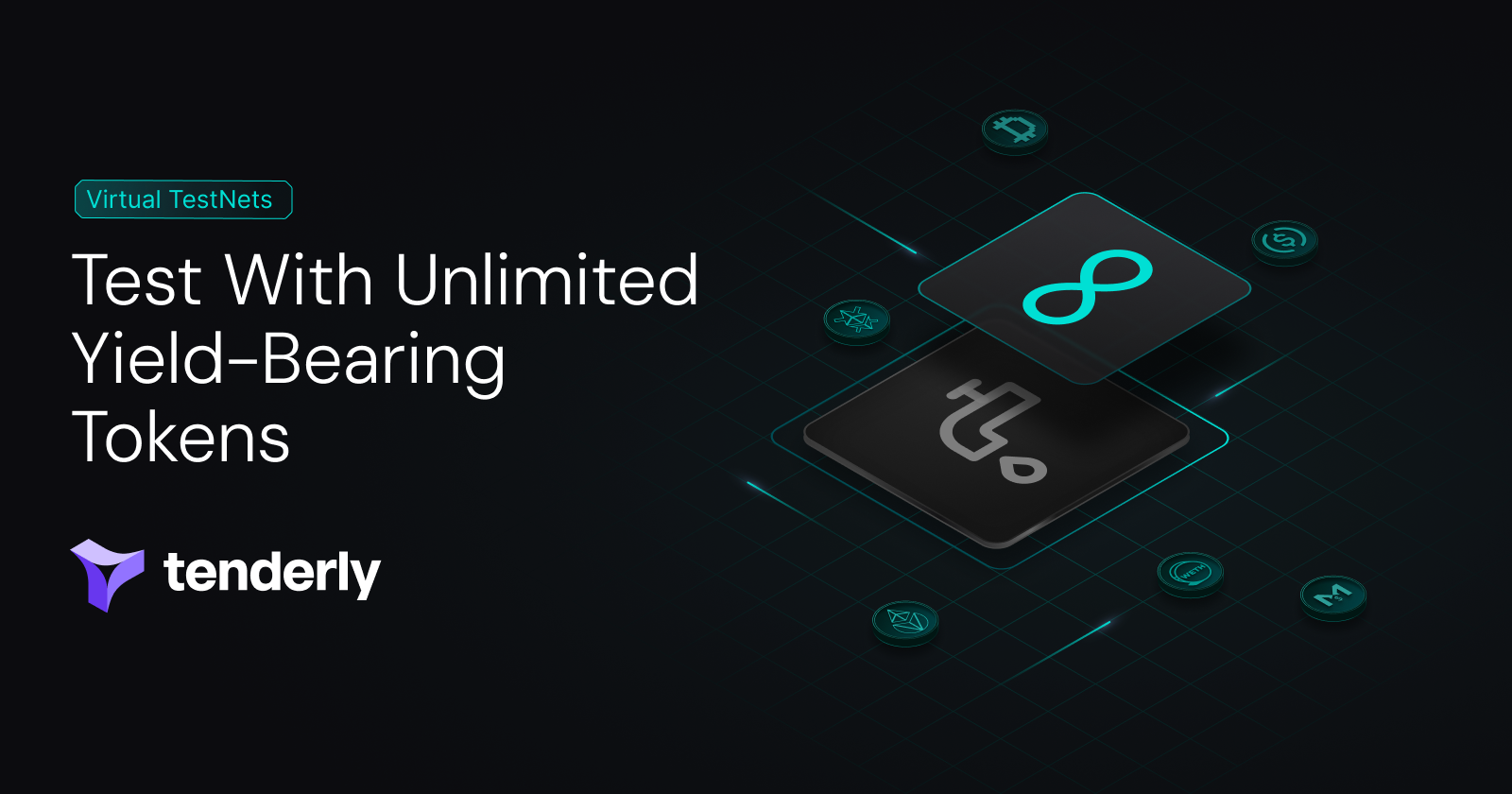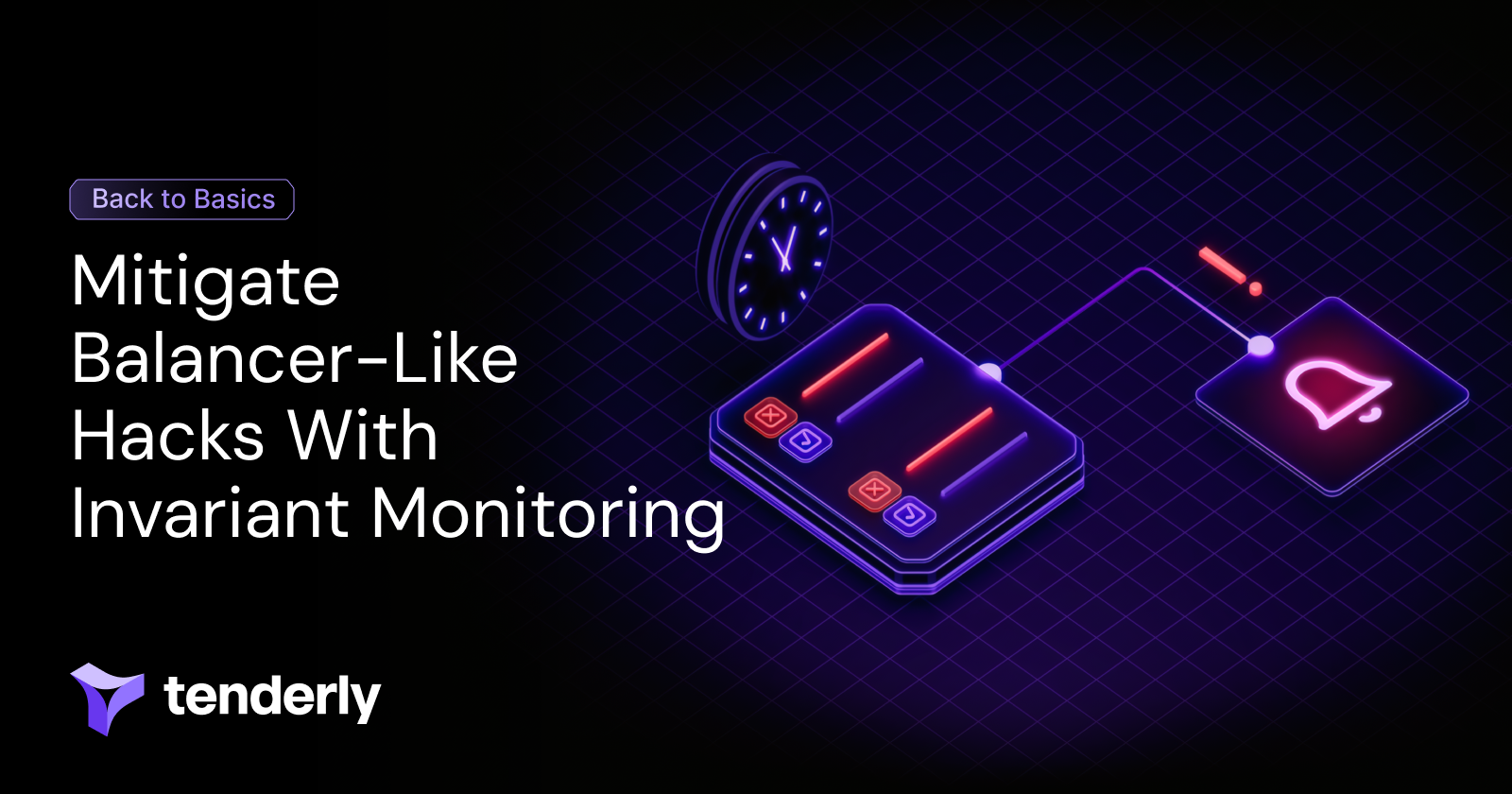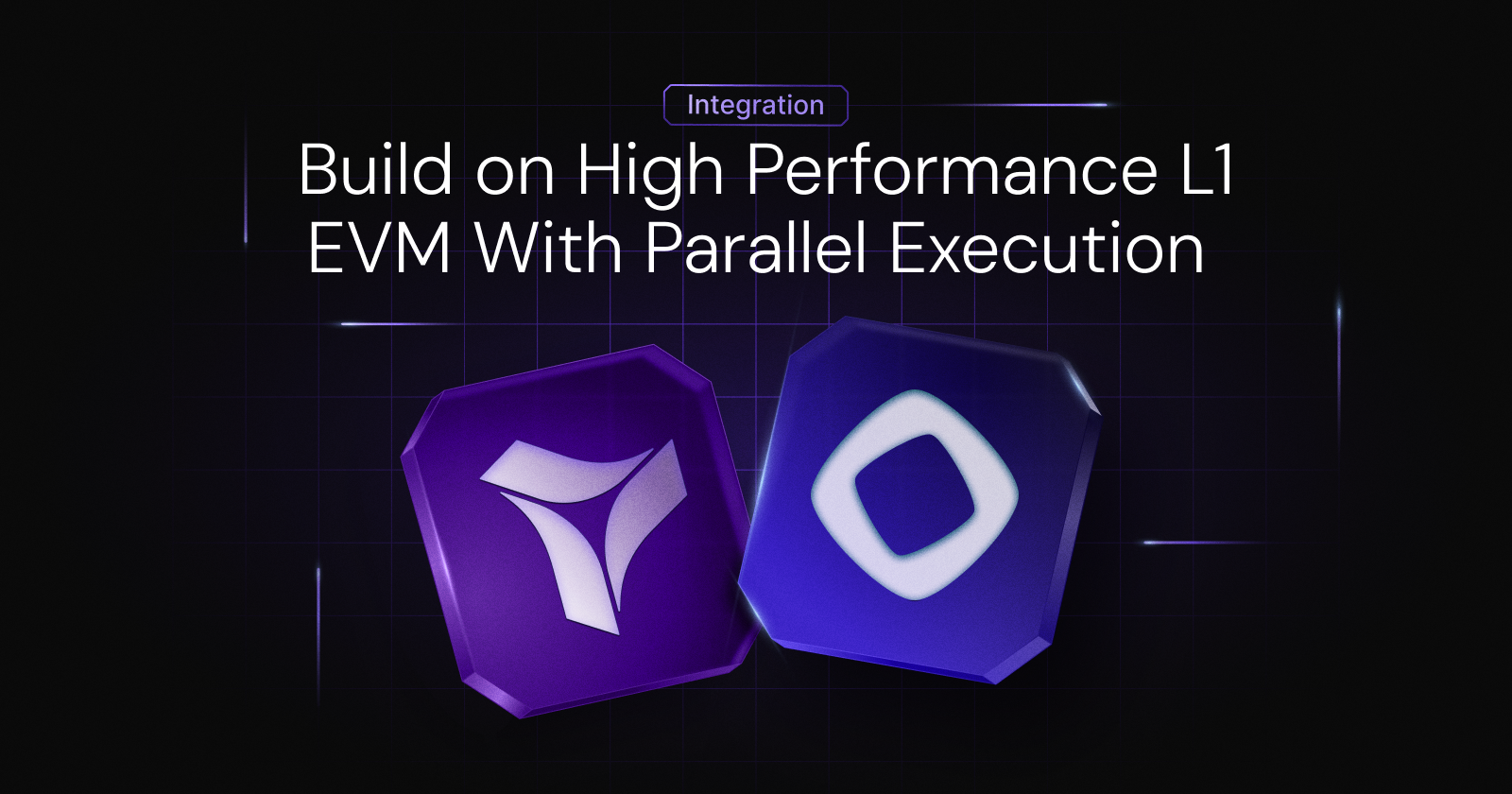With Tenderly’s wallet support, you can manage and monitor all your wallets in one place. You can track a list of Ethereum wallets with simplicity, ease of use, and support from other powerful Tenderly features.
Whether you’d like to track changes in your Ether wallet balance or check the transactions going through your wallet, you can automate this process using the Tenderly platform.
What can you track with Tenderly?
Ethereum wallet monitoring can bring invaluable benefits to many across the Web3 space, including smart contract developers, NFT traders, DAO participants, and oracle services. So, you can use Tenderly’s wallet functionalities in endless ways.
Here are a few scenarios that can get you started, but feel free to send your ideas our way.
Token transfers
The most straightforward action you can do with wallets is to set up Alerting for token transfers. Remember – you don’t have to set up a separate alert for every wallet. You can tag multiple wallets when you configure the alert. This way, you’ll get notified each time one of the tagged wallets receives or sends an ETH token transfer.
Alerting for DAOs, multisig wallets, and vaults
In addition to alerts for successful and failed transactions, you can set up a sort of “allowlisted callers” alert. When you’re operating within a DAO or using a multisig wallet, there’s an expected pool of addresses that interact with the system. You can create a list of these users and set up an alert that will be triggered if someone outside the organization interacts with the wallet.
By the same token, you can also create a “blocklisted callers” alert that will notify you if someone on your persona non-grata address list or a known malicious address is interacting with your wallet. This can help you react quickly in situations such as hacks and exploits.
Balance tracking for bots, keepers, and oracles
Bots, keepers, and oracles must always be switched on. To ensure that they can work without disruption, it’s best to keep some ETH for gas fees on hand. And to do that, you need to monitor the balance of your wallet.
The easiest way to avoid a crisis is to set up an alert that will notify you when the ETH (or other network currency) balance drops under a threshold you specify. This will give you time to top off your account, so your processes continue running smoothly.
Higher-bidder alerts for NFT auctions
Monitoring certain Ethereum wallet addresses also helps you stay ahead of the competition. Here’s a scenario: You see a very cool NFT, maybe a Pikachu in a spacesuit floating around in...well, space. You badly want to buy it, but so do about a thousand other people and so the bidding wars begin.
Our wallet feature lets you set up an alert that notifies you every time someone places a larger bid. This way, you can boost your offer and eventually claim your Pikachu NFT. You’re welcome!
How can you monitor Ethereum wallets?
Tenderly allows you to add and monitor wallets across multiple supported networks. You can easily learn how to set up Ethereum wallets on Tenderly, label them using different tags, and even replay the transactions going through your wallets.
So, let’s check out the options you have after adding wallets to Tenderly.
View transaction details
Let’s start with the essentials. For every wallet you add, you get a detailed view of all transactions, plus options to set up columns to highlight the most important info.
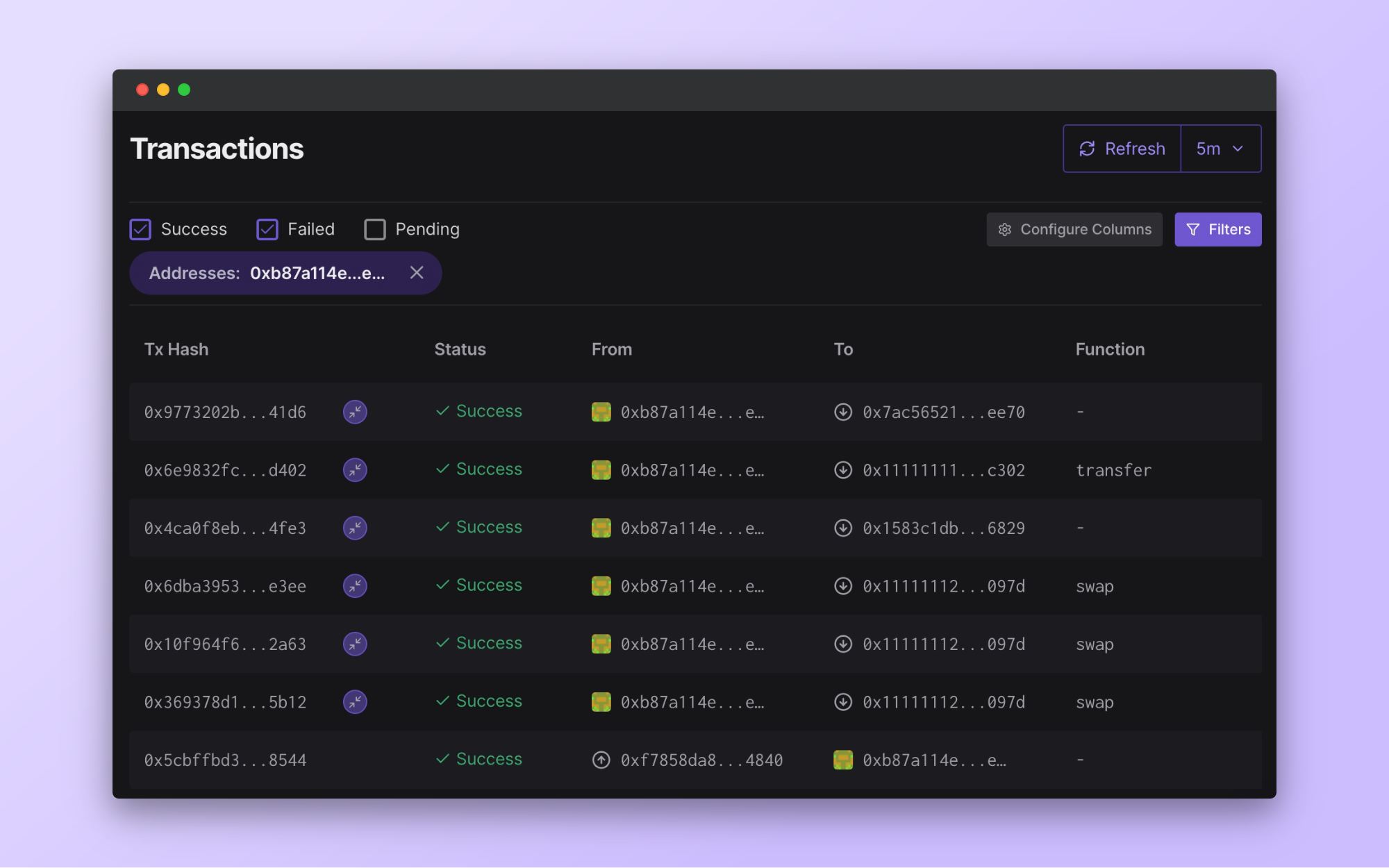
Then, you can filter transactions by status, type, network, and other criteria.
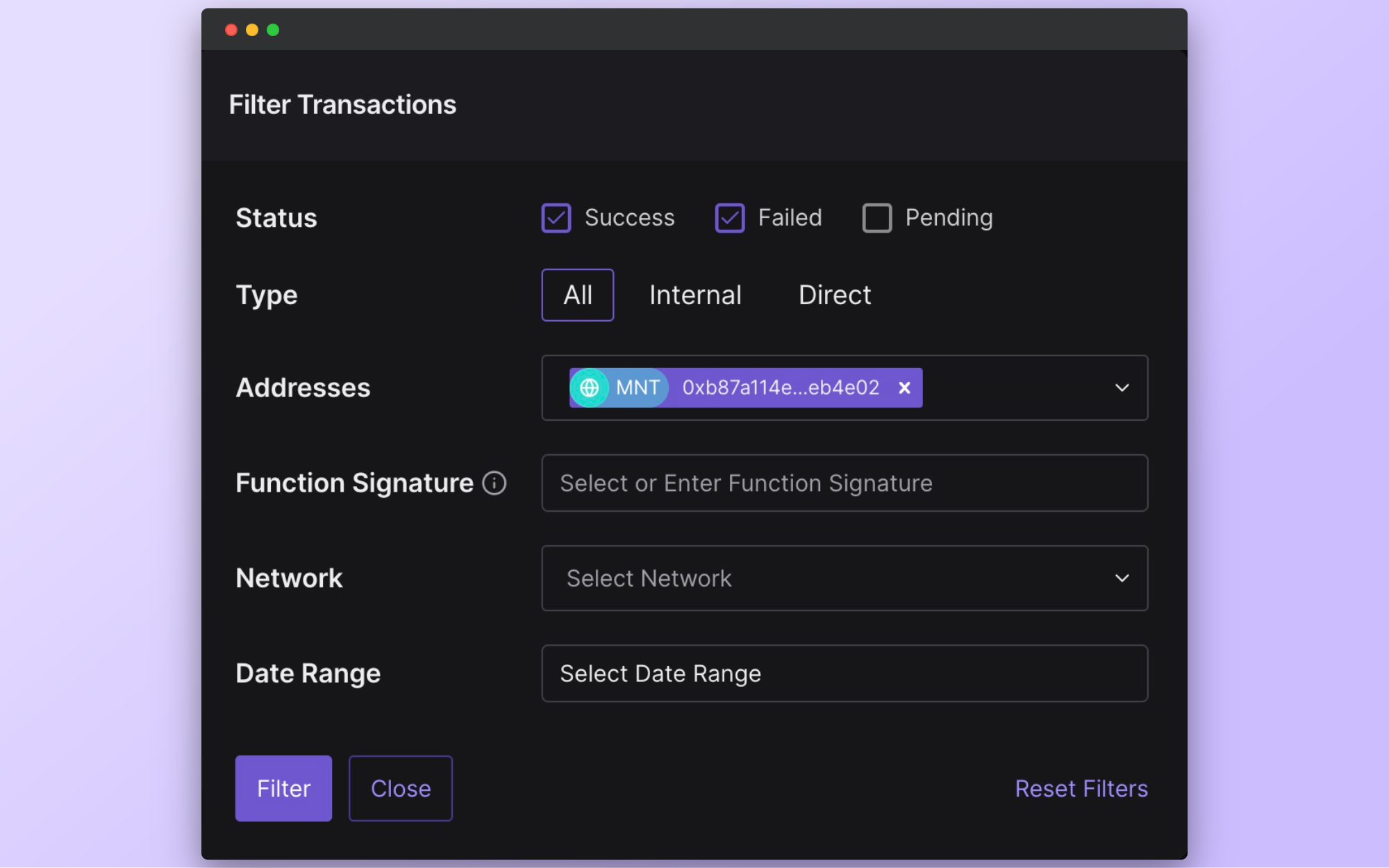
Additionally, you can browse through your successful and failed transactions separately. For failed transactions, you can simply access Tenderly Debugger with a click, see exactly what went wrong, and debug an issue quickly.
Simulate wallet transactions
Found a fix for a failed transaction in your wallet? Use our Transaction Simulator to re-create transactions while changing parameters to see how they would play out on a particular network. This can help you speed up debugging failed transactions and test new ones before submitting them on-chain.
Here’s a short video that can help you set up the debugging flow on Tenderly:
Set up alerts for your wallets
Now let’s talk about a highly useful combo: wallets + alerts. Tenderly lets you set up real-time alerts for a wide variety of scenarios, so you immediately know what’s happening. You can choose to receive notifications about balance changes, successful and failed transactions, the exact amounts of deposits, and many other events. You can route notifications to email, Slack, Discord, and other channels.
Actively monitor and respond
Once you receive alert notifications for wallet-related events, it would be great if you could respond right away, right? Well, you can! Just set up webhook endpoints as your alert destination. This way, you’ll get customized notifications to a custom webhook URL. And once you do, you can, for example, top up your wallet balance.
Additionally, you can create a Tenderly Web3 Action that will be triggered by your wallet alerts. You can write a custom piece of code that your Web3 Action will then execute once triggered by your wallet alert.
Convert a contract to a wallet
When adding a smart contract to your project, you can convert it to a wallet. This creates a contract wallet that you can view in the Wallet tab of the Tenderly Dashboard. This is very useful if you have a contract in your dapp that acts as a wallet, so it might make more sense to convert it. Of course, you can always revert this action and turn your contract wallet back into a contract.

Keep track of important wallet metrics
Tenderly also allows you to track wallet-related usage trends and metrics. Just head over to the Analytics tab in the navigation menu and add one or more wallets in the filter section. This gives you a breakdown of different parameters, such as executed transactions or ETH values.
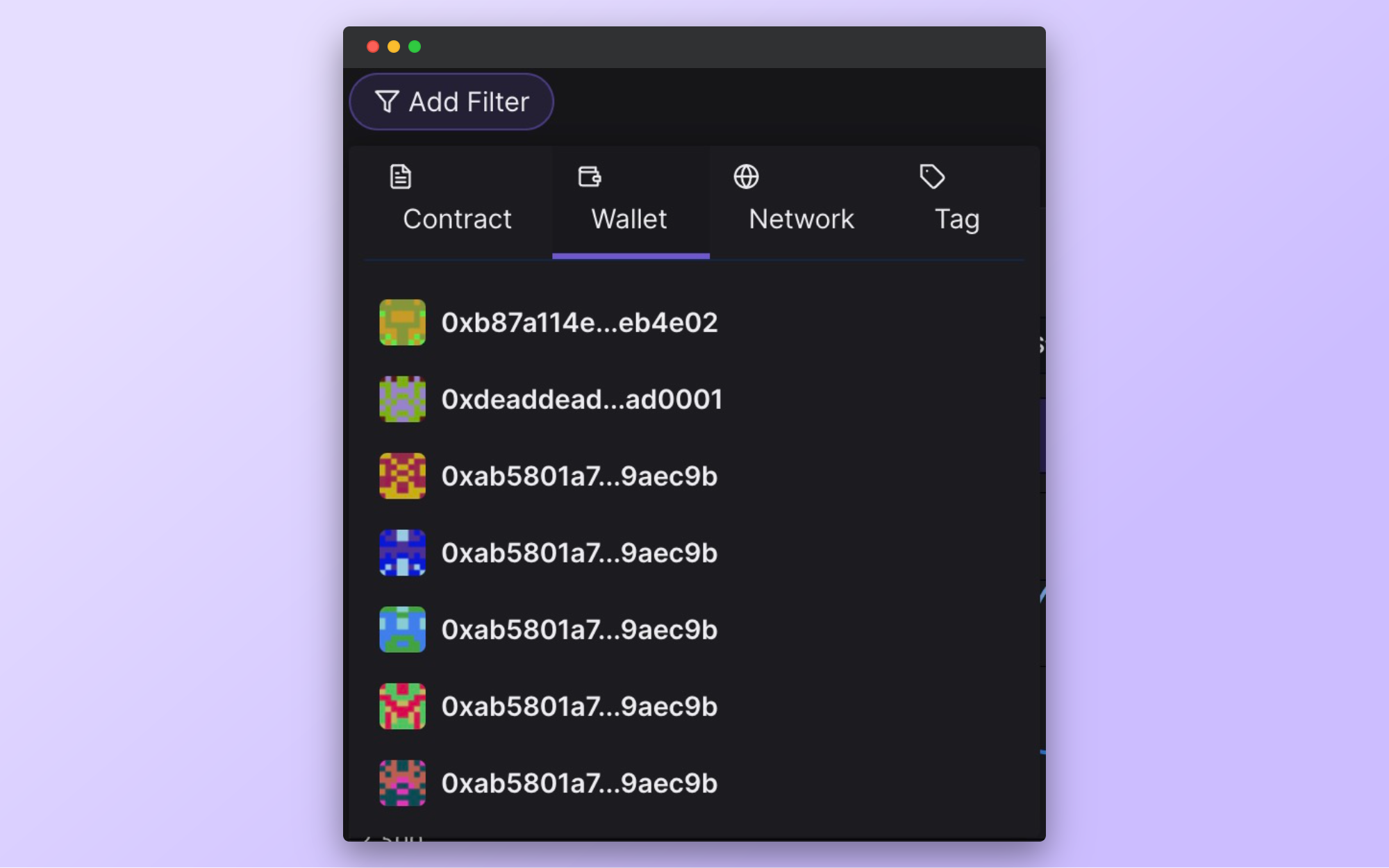
Monitor your Ethereum wallets with ease
Instead of having to manually check your wallets, you just need to look up the Ethereum wallet addresses of interest and add them to Tenderly. Once you add them, you can set up different alerts, automate responses, or inspect wallet-related transactions in greater detail. With Tenderly’s wallet support, you can stay up to date with everything happening with your wallets with minimal effort.
So, now it’s up to you! Create a Tenderly account and experiment with your own scenarios for crypto wallet monitoring. And if you come across something interesting, feel free to share it with us – we’re always keeping track of what’s going on!
